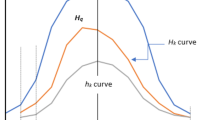Abstract
Several combinatorial problems, such as car sequencing and rostering, feature sequence constraints, restricting the number of occurrences of certain values in every subsequence of a given length. We present three new filtering algorithms for the sequence constraint, including the first that establishes domain consistency in polynomial time. The filtering algorithms have complementary strengths: One borrows ideas from dynamic programming; another reformulates it as a regular constraint; the last is customized. The last two algorithms establish domain consistency, and the customized one does so in polynomial time. We provide experimental results that demonstrate the practical usefulness of each. We also show that the customized algorithm applies naturally to a generalized version of the sequence constraint that allows subsequences of varied lengths. The significant computational advantage of using a single generalized sequence constraint over a semantically equivalent collection of among or sequence constraints is demonstrated empirically.
Similar content being viewed by others
References
Apt, K. (2003). Principles of constraint programming. Cambridge: Cambridge University Press.
Beldiceanu, N., & Carlsson, M. (2001). Revisiting the cardinality operator and introducing the cardinality-path constraint family. In P. Codognet (Ed.), Proceedings of the 17th international conference on logic programming (ICLP 2001), LNCS (Vol. 2237, pp. 59–73). New York: Springer.
Beldiceanu, N., Carlsson, M., & Rampon, J.-X. (2005). Global constraint catalog. Technical Report T2005-08, SICS.
Beldiceanu, N., & Contejean, E. (1994). Introducing global constraints in CHIP. Journal of Mathematical and Computer Modelling, 20(12), 97–123.
Dechter, R. (2003). Constraint processing. San Francisco: Morgan Kaufmann.
Demassey, S., Pesant, G., & Rousseau, L.-M. (2006). A cost-regular based hybrid column generation approach. Constraints, 11, 315–333.
Dincbas, M., Simonis, H., & van Hentenryck, P. (1988). Solving the car-sequencing problem in constraint logic programming. In Y. Kodratoff (Ed.), Proceedings of the European conference on artificial intelligence (ECAI) (pp. 290–295).
Gent, I., & Walsh, T. (1999). CSPLib: A benchmark library for constraints. Technical report, TR APES-09-1999. at http://www.csplib.org.
Mohr, R., & Masini, G. (1988). Good old discrete relaxation. In European conference on artificial intelligence (ECAI) (pp. 651–656).
Pesant, G. (2004). A regular language membership constraint for finite sequences of variables. In M. Wallace (Ed.), Proceedings of the tenth international conference on principles and practice of constraint programming (CP 2004), Lecture Notes in Computer Science (Vol. 3258, pp. 482–495). New York: Springer.
Régin, J.-C. (1996). Generalized arc consistency for global cardinality constraint. In Proceedings of the thirteenth national conference on artificial intelligence and eighth innovative applications of artificial intelligence conference (AAAI / IAAI) (Vol. 1, pp. 209–215). Cambridge: AAAI/MIT Press.
Régin, J.-C. (2005). Combination of among and cardinality constraints. In R. Barták, & M. Milano (Eds.), Proceedings of the second international conference on integration of AI and OR techniques in constraint programming for combinatorial optimization problems (CP-AI-OR 2005), lecture notes in computer science (Vol. 3524, pp. 288–303). New York: Springer.
Régin, J.-C., & Puget, J.-F. (1997). A filtering algorithm for global sequencing constraints. In G. Smolka (Ed.), Proceedings of the third international conference on principles and practice of constraint programming (CP97), LNCS (Vol. 1330, pp. 32–46). New York: Springer.
Trick, M. (2003). A dynamic programming approach for consistency and propagation for knapsack constraints. Annals of Operations Research, 118, 73–84.
van Hoeve, W.-J., Pesant, G., Rousseau, L.-M., & Sabharwal, A. (2006). Revisiting the sequence constraint. In CP-06: 12th international conference on principles and practice of constraint programming, lecture notes in computer science (Vol. 4204, pp. 620–634). Nantes, France, September.
Zemmouri, T., Chan, P., Hiroux, M., & Weil, G. (2004). Multiple-level models: An application to employee timetabling. In E. K. Burke, & M. Trick (Eds.), Proceedings of the 5th international conference on the practice and theory of automated timetabling (PATAT’04) (pp. 397–412).
Author information
Authors and Affiliations
Corresponding author
Rights and permissions
About this article
Cite this article
van Hoeve, WJ., Pesant, G., Rousseau, LM. et al. New filtering algorithms for combinations of among constraints. Constraints 14, 273–292 (2009). https://doi.org/10.1007/s10601-008-9067-7
Published:
Issue Date:
DOI: https://doi.org/10.1007/s10601-008-9067-7




